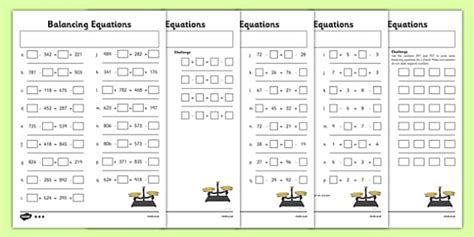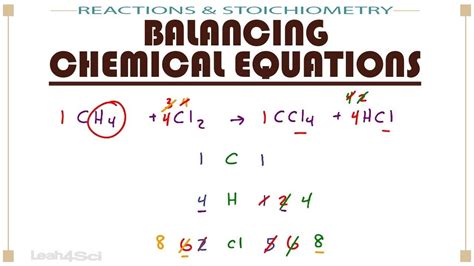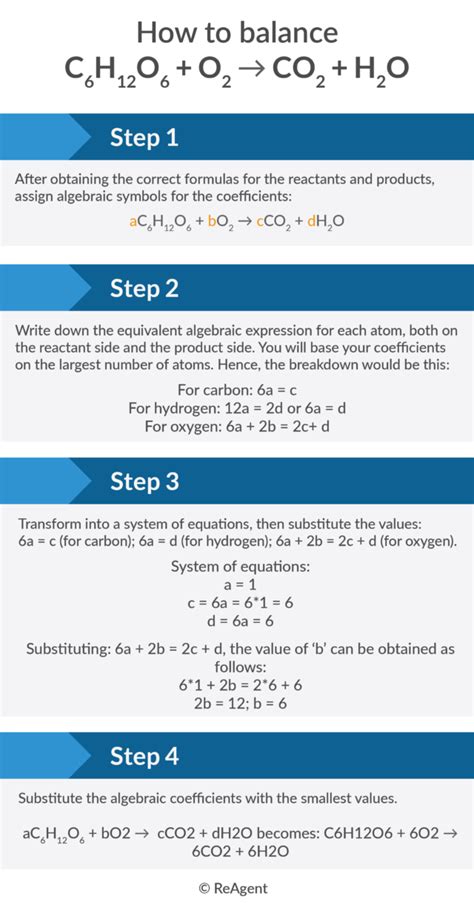Chemical reactions are a fundamental aspect of chemistry, and balancing equations is a crucial step in understanding these reactions. Balancing equations can seem like a daunting task, especially for those who are new to chemistry. However, with the right approach and techniques, balancing equations can be made easy. In this article, we will explore the world of balancing equations, discuss the importance of balancing equations, and provide quick solutions to make the process easier.
Key Points
- Understanding the importance of balancing equations in chemistry
- Learning the basic techniques for balancing equations
- Applying quick solutions to balance equations efficiently
- Practicing with examples to reinforce understanding
- Using online tools and resources to support learning
Why Balance Equations?

Balancing equations is essential in chemistry because it ensures that the number of atoms of each element is the same on both the reactant and product sides of the equation. This is based on the law of conservation of mass, which states that matter cannot be created or destroyed in a chemical reaction. By balancing equations, chemists can predict the amount of reactants required and the amount of products formed, which is critical in industrial processes, laboratory experiments, and environmental studies.
Basic Techniques for Balancing Equations
There are several techniques for balancing equations, including the inspection method, the systematic method, and the algebraic method. The inspection method involves adjusting the coefficients of the reactants and products by trial and error until the equation is balanced. The systematic method involves a step-by-step approach, where the equation is balanced by adjusting the coefficients of one element at a time. The algebraic method involves using variables to represent the coefficients and solving a system of equations to find the values of the coefficients.
| Method | Description |
|---|---|
| Inspection Method | Adjusting coefficients by trial and error |
| Systematic Method | Adjusting coefficients step-by-step |
| Algebraic Method | Using variables to solve a system of equations |

Quick Solutions for Balancing Equations

While mastering the techniques for balancing equations takes time and practice, there are several quick solutions that can make the process easier. One approach is to use online tools and software that can balance equations automatically. Another approach is to use shortcuts and tricks, such as balancing the equation by adjusting the coefficients of one element at a time. Additionally, practicing with examples and reviewing the basics of chemistry can help reinforce understanding and make balancing equations easier.
Online Tools and Resources
There are many online tools and resources available that can support learning and make balancing equations easier. Online equation balancers can balance equations automatically, and online tutorials and videos can provide step-by-step instructions and examples. Additionally, online forums and discussion groups can provide a community of learners and experts who can offer support and guidance.
Some popular online tools and resources for balancing equations include:
- Online equation balancers, such as WebEquation or Equation Balancer
- Online tutorials and videos, such as Khan Academy or Crash Course Chemistry
- Online forums and discussion groups, such as Reddit's r/chemistry or r/learnchemistry
What is the importance of balancing equations in chemistry?
+Balancing equations is essential in chemistry because it ensures that the number of atoms of each element is the same on both the reactant and product sides of the equation, which is based on the law of conservation of mass.
What are some common techniques for balancing equations?
+Common techniques for balancing equations include the inspection method, the systematic method, and the algebraic method.
Are there any online tools and resources available to support learning and balancing equations?
+Yes, there are many online tools and resources available, including online equation balancers, online tutorials and videos, and online forums and discussion groups.
In conclusion, balancing equations is a crucial step in understanding chemical reactions, and mastering the techniques for balancing equations takes time and practice. However, with the right approach and techniques, balancing equations can be made easy. By using online tools and resources, practicing with examples, and reviewing the basics of chemistry, chemists can reinforce their understanding and make balancing equations easier. Whether you are a student, a researcher, or a professional, balancing equations is an essential skill that can be developed with patience, practice, and dedication.
